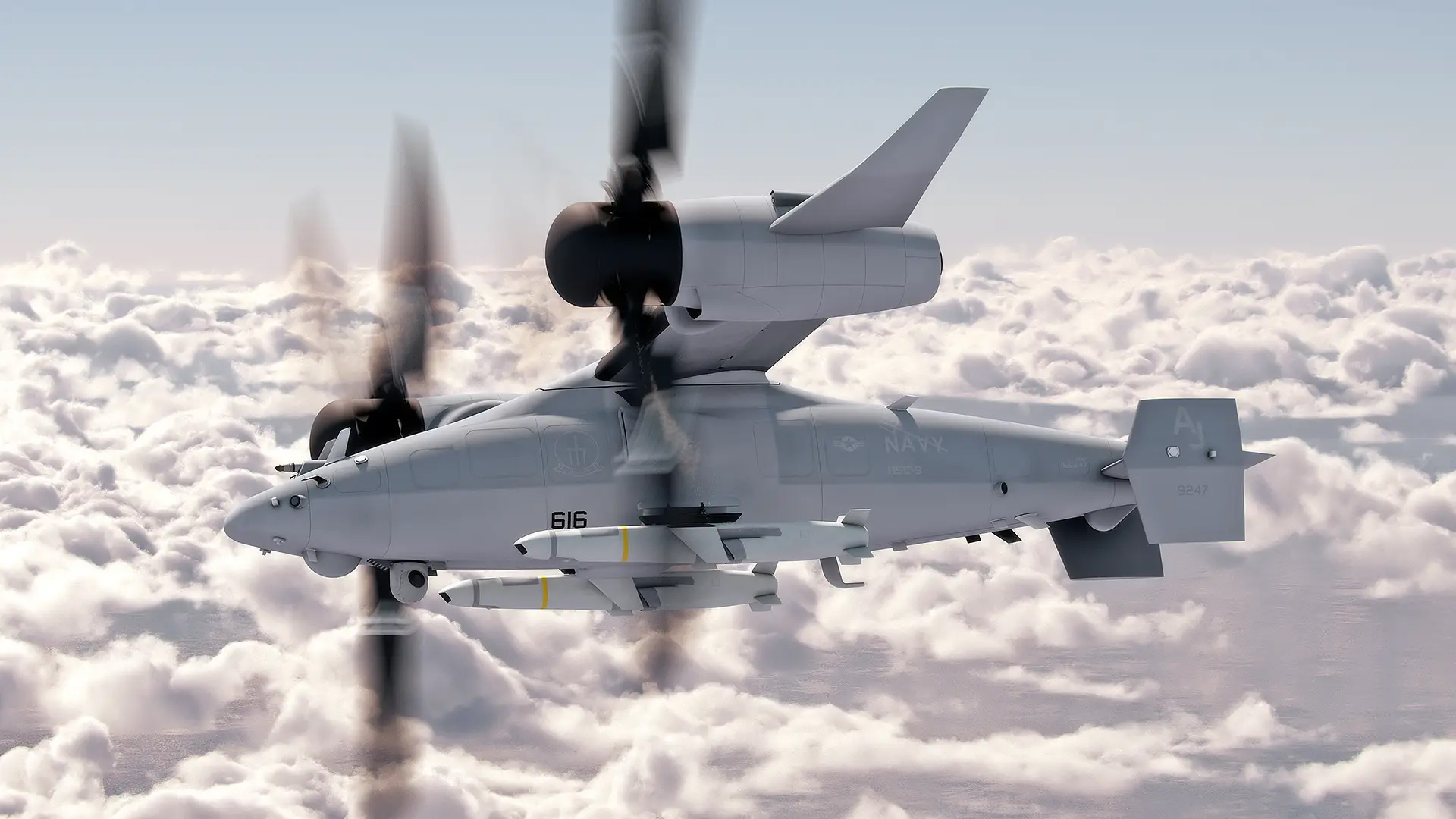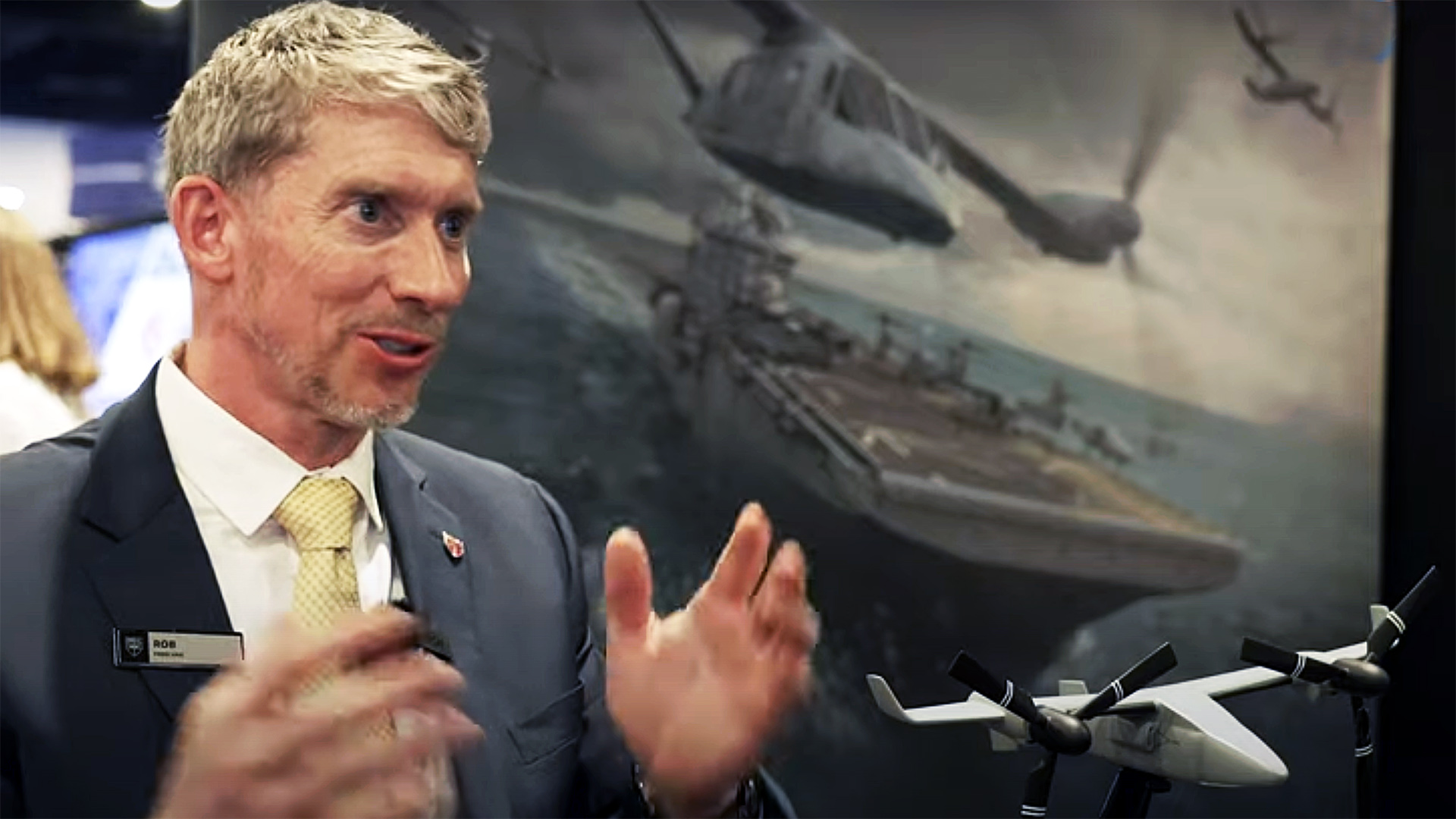TWZ caught up with Bell’s Director of Government Relations, Rob Freeland, on the floor of Sea Air Space 2024 to talk about Future Vertical Lift-Maritime Strike (FVL-MS). This initiative would see the Navy, and possibly its closely related sister service, the Marine Corps, procure new multi-role tilt-rotor capabilities that include the ability to strike at the enemy from afar. This could come in the form of both manned and unmanned aircraft capable of operating independently and together.
For Bell, FVL-MS would be satisfied by a navalized variant of the crew V-280 Valor, the same aircraft that is serving as the basis of the Army’s Future Long Range Assault Aircraft (FLRAA), as well as the related V-247 Vigilant drone concept that has been adapted to the Navy’s needs. At least for the latter, this includes fitting in a destroyer’s hangar. You can read all about the V-247 and its reconfiguration for Navy use in this past TWZ article.

The Navy’s Naval Aviation Vision 2030-2035 document describes the overarching FVL-MS requirement as follows:
“The expected service life for both the MH-60R/S and MQ-8, coupled with a rapidly evolving threat, pose potential rotary wing capability and capacity gaps in the future. Mitigating these gaps will require the recapitalization of current capabilities as well as development of new capabilities as part of the Future Vertical Lift (Maritime Strike) family of systems (FVL (MS))—both manned and unmanned… The capabilities envisioned include increased survivability, long-range, persistent ISR-T, integrated air and missiles defense, long-range offensive anti-surface and anti-submarine warfare (ASW), communications and data relay, fleet logistics, and personnel recovery. The threat paradigm in the 2030-2035 timeframe— as well as the principles of DMO [Distributed Maritime Operations] —dictate that FVL (MS) be able to conduct these tasks in a highly contested environment, at greater ranges, and with greater speed, endurance and precision. FVL (MS) will leverage advances in AI and ML sensor technology, AI and ML to fully integrate the manned and unmanned platforms to form highly effective teams, thereby reducing operator workload and increasing the speed and quality of aircrew decision-making.”
It’s thought that the Navy could move forward beyond the Request for Information (RFI) stage for FVL-MS this year.
With that quick background out of the way, here is how Rob Freeland sees the high bar the Navy is setting for FVL-MS becoming a reality thanks to the company’s unique experience in tilt-rotor tech:

Contact the editor: Tyler@twz.com
